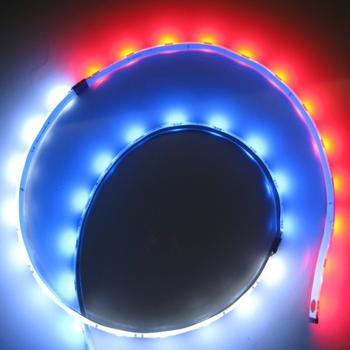 After 2009, the investment in enterprises in the organic EL supply chain exceeded US$500 million. At the time, the overall value of the organic EL market was only 500 million U.S. dollars. Why is there such a huge investment? Leading the development of organic EL is the display. The sales volume of organic EL in 2011 was approximately US$3 billion. In 2012, it increased to approximately US$6 billion. It is expected to become another major use of organic EL lighting, but at present it has not contributed much to the expansion of the market. Now, organic EL's sights are aimed at the use of surface-emitting and non-glare features.
After 2009, the investment in enterprises in the organic EL supply chain exceeded US$500 million. At the time, the overall value of the organic EL market was only 500 million U.S. dollars. Why is there such a huge investment? Leading the development of organic EL is the display. The sales volume of organic EL in 2011 was approximately US$3 billion. In 2012, it increased to approximately US$6 billion. It is expected to become another major use of organic EL lighting, but at present it has not contributed much to the expansion of the market. Now, organic EL's sights are aimed at the use of surface-emitting and non-glare features. Organic EL is a technology that is still in development, and it does not compete with the inorganic EL that dominates the market. The luminous efficiency of LED lighting fixtures is about 110lm/W, while the highest luminous efficiency of organic EL products is only 60lm/W. The cost per klm is about $5 for LED technology and about $350 for organic EL. The warranty life of LED products is 20 to 25 years, while organic EL is only 5 to 10 years. Also, some organic EL materials degrade faster than others, so the color may change. This will not be tolerated in industrial and automotive applications.
Organic EL can make a variety of combinations of different materials, but also a variety of configurations. Attempts are being made to increase luminous efficiency by increasing driving current at the expense of device lifetime. Brightness can be improved by the method of tandem organic EL construction. Under the same conditions of current, two different configurations of organic EL in series can emit about 2 times of light. Or achieve the same brightness at low currents, improving reliability and longevity.
The reason why the organic EL deteriorates is that the organic material layer is easily affected by oxidation and moisture, so it needs to be protected by a penetration preventing material. However, it is difficult to manufacture a highly cost-effective, transparent, robust, high-temperature process and a flexible impervious material. At present, glass is used as a thin film layer substrate, and a glass plate is also used for mechanical protection and water and oxidation protection. But even these devices will degrade after the temperature rises. For example, problems have arisen in accelerating stress tests conducted by automotive companies at temperatures above 85°C.
The manufacturing yield of organic EL is very low. This is because at the manufacturing stage, there is no adequate control and skills and experience are insufficient. The production cost of manufacturing organic EL is high. Because there is no standard equipment, all trial production lines will take several months to develop. OSRAM Germany has invested 20 million euros in Germany's pilot production line. Although organic EL manufacturers have proposed that if high-cost complex molecules can be made into extremely thin layers, the cost can be reduced, but in practice, they are mostly lost during the manufacturing process.
If you use a larger mother glass substrate, you should also be able to reduce costs. Now a 47cm x 37cm second-generation glass master can be used to cut several 10cm x 10cm panels, but illuminating a room requires more than 10 panels. Each panel will have cutting and connection costs, and a large panel will reduce costs. In addition, OSRAM solves this problem by applying a metal mesh on the electrode, although there is also a problem of how to make the surface of the panel achieve uniform and uniform light emission.
The first stage of organic EL lighting is special lighting applications, followed by high-level offices, commercial facilities, and advanced residential lighting. It is expected that the penetration rate of organic EL lighting will reach approximately 1.5% by 2020, with a market size of US$1.7 billion, of which 80% is for general lighting purposes. However, this market size can only accommodate some organic EL lighting manufacturers. For organic EL to succeed, new materials must be developed. Countries such as South Korea and Germany, which are very strong in the chemical field, may have powerful companies.
With so much uncertainty, there are still so many countries involved in organic lighting and joining their entire value chain, which is truly amazing. Companies involved in equipment manufacturers, fluorescent and phosphorescent materials suppliers, polymer materials development companies, as well as plastic and metal foil manufacturers can become glass and flexible substrate materials. Some companies have developed new constructions for organic EL, plastics, and special technical solutions for encapsulation and impermeable or new electrodes. Fortunately, this kind of technological innovation brought about by organic EL can also be used in many other electronic fields, thus helping to increase investment efficiency.
Non Standard Power Supplies,400W Server Power Supply,250W Non Standard Power Supply,180W Switching Power Supply
Boluo Xurong Electronics Co., Ltd. , https://www.greenleaf-pc.com